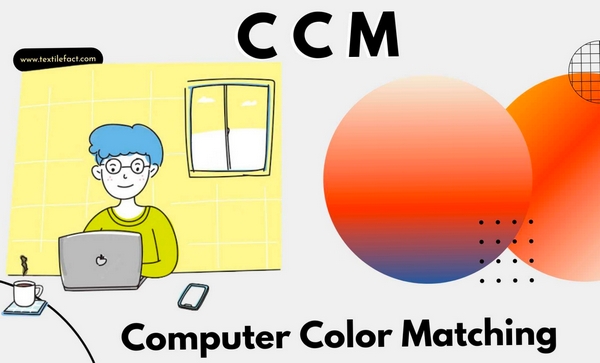Introduction:
Color reflects emotions. It has a distinct power over human behavior. Hence, color is an important component in different social industries, such as fashion, graphic design, and printing. It is a great challenge to ensure that the color applied is perfect and consistent across all media types, and that is where color matching systems come in. Here we will explain the mechanism of computer color matching systems and their importance in textile.
What is CCM System?
CCM means Computer Color Matching. Computer color matching system is an electronic device that analyzes colors and translates them into digital codes that can be decoded again on different devices. It is driven on the basis of the basic principle that color is nothing but the reflection of light.

How does CCM Works?
CCM system consists of a light source, a spectrophotometer, and software that can interpret the data generated by the spectrophotometer.
Light source: The light source is one if the major components of the CCM system. It must be able to produce a light that is similar to the light that illuminates the object being measured. For instance, if the object being measured is viewed under natural light, the light source must replicate natural light. The light source provides a consistent and reliable light that is directed towards the object being measured.
Spectrophotometer: The spectrophotometer measures the color of the object by analyzing the light reflected from it. The spectrophotometer recognizes the amount of light absorbed and reflected. The preserved data of absorption and reflection of light is converted into digital code that can be interpreted by the software. The spectrophotometer can identify various attributes of color, such as hue, saturation, and brightness. These attributes are used to create a digital color code that can be used to reproduce the color accurately.

Software: The software is the heart of the computer color matching system. It receives the digital code generated by the spectrophotometer and uses it to create a color formula that can be used to produce the same color on different devices. The software can create a color formula for various printing methods, such as offset, flexography, and digital printing. The formula takes into account the type of ink, the type of paper or material, and the printing process used to ensure that the color is accurately reproduced on the media type.
Application of Computer Color Matching System in Textile:
The computer color matching system is used in various industries to ensure that the color is accurately reproduced across all media types. For instance, in the fashion industry, color accuracy is essential in fabric production. The color of the fabric must be consistent across all batches to ensure that the final product is uniform. The computer color matching system is used to create a color formula that can be used to dye the fabric to the desired color accurately.

In the graphic design industry, the CCM system is used to ensure that the color of the design is accurately reproduced on various media types. For instance, a design created on a computer monitor must be printed with the same color accuracy on paper. The computer color matching system is used to create a color formula that can be used to print the design with the same color accuracy on different media types.
In the printing industry, the computer color matching system is used to ensure that the color is accurately reproduced on different printing methods. For instance, a design created for offset printing must be printed with the same color accuracy on digital printing. The computer color matching system is used to create a color formula that can be used to print the design with the same color accuracy on different printing methods.
Conclusion:
The computer color matching system is an essential component in various industries. It ensures that the color is accurately reproduced across all media types, which is crucial in maintaining consistency and uniformity in the final product.

Working as head of the dept. of Wet Process Engineering at Textile Engineering College, Zorargonj, Chattogram. He is also CEO at TEC Media and advisor at Textile Engineers Club. He hosts textile related online program ‘TEC Show’.

